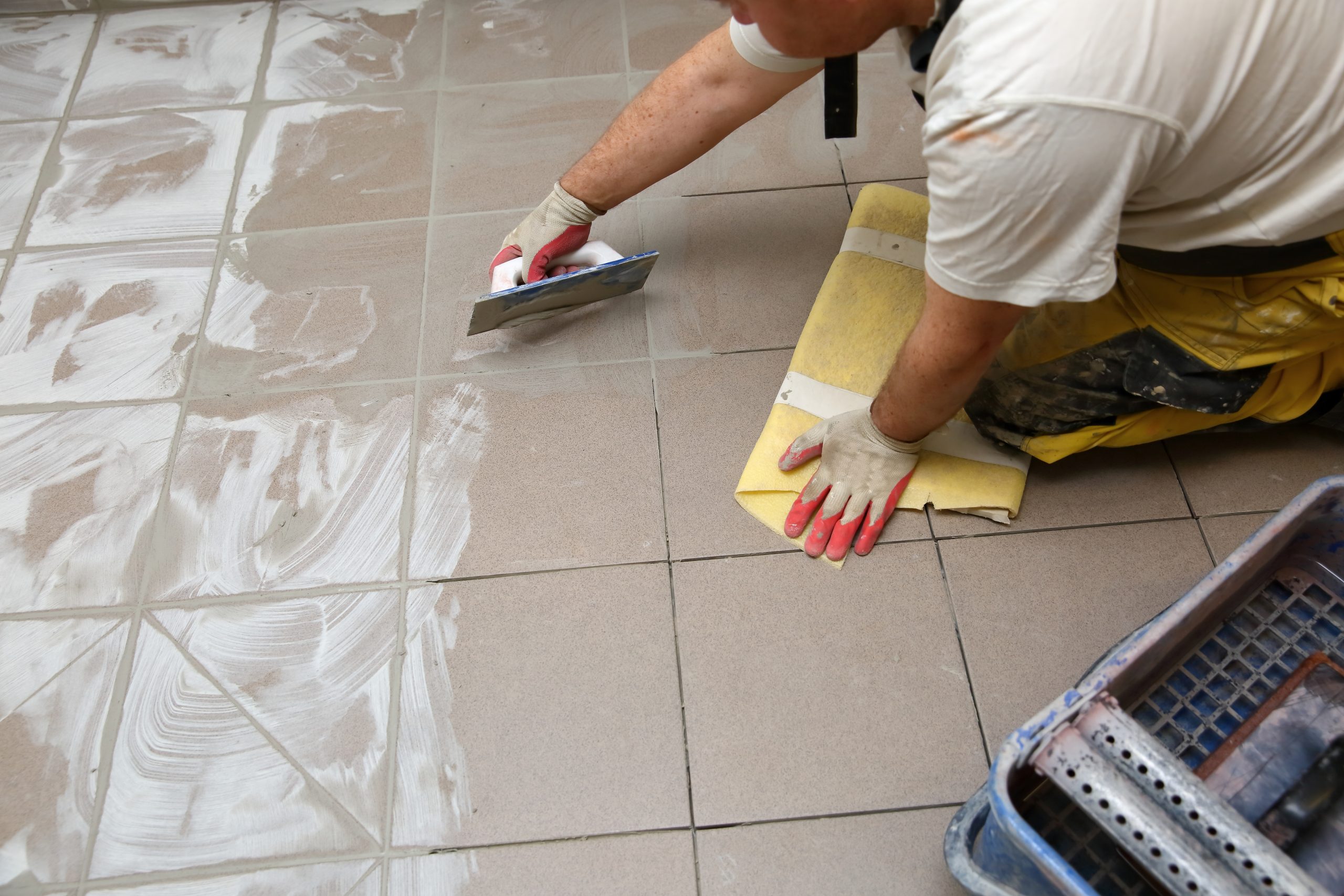
Grouting is probably the best part of a tiling job–and not just because you get to smear mud all over the place. When you grout your tile, your project starts looking more complete, instead of like a collection of individual tiles. A tile project can be DIYed with ease if you’ve brushed up on the process and have the right materials. In this blog we cover everything you need to get the job done right!
Tools & Materials
Tools
- Grout Sponge
- Large Plastic Bucket
- Grout Mixer Drill Attachment
- Putty Knife
- Grout Float – A specially designed smoothing tool that features a flat and mostly-firm rubber pad.
- Paint Mixing Sticks
- Grout Saw
Materials
- Grout – There are two different types of grout: “sanded” and “non-sanded”. Sanded is durable and often used in flooring applications, while non-sanded is best suited for wall or counter applications.
- Water
Process
- Mix your Grout with Water in a Bucket – When mixing grout, always follow the manufacturer’s instructions. But here’s the best way to achieve the right consistency: Pour ¾ of the recommended amount of water into the bucket first, then add the grout. Mix thoroughly, then add the remaining water until the grout looks like pancake batter. A grout mixer attachment for a drill is recommended to speed up the process.
- Press the Grout into the Space between Tiles – Use a putty knife to scoop a moderate portion of grout out of the bucket and place it on the tile. Next, use a grout float on a diagonal angle to press the grout into the empty space. Once the grout line is filled, use a downward motion over the grout line to smooth out lumps.
- Sponge off Excess Grout – Now that you have a floor full of mud, it’s time to wipe it up. Using a dense grout sponge soaked in water, wipe up the excess mud but only after letting the grout sit for 20 to 30 minutes. After wiping up the excess mud, wait three hours and repeat the process. However, the second time around make sure excess grout doesn’t dry on the tile or outside of the grout line. Instead, keep your bucket of water and sponge close at hand to clean as you go.
- Clean the Floor – Now matter how much you clean with water and a sponge, once everything is dry there still will be a grout haze on the floor. If you continue to use a wet cloth or sponge to wipe away the haze, you’ll be in a vicious grout-wiping cycle. Instead, use a dry towel to rub away the haze; afterwards the dust can be swept up.
Call Super Terry Today!
Learning how to grout tile is that easy! But, if the task seems too daunting even for a DIYer, call Terry’s Plumbing instead. Super Terry has your back and can give your bathroom a facelift in no time. Contact us today for more information.
 (412) 364-9114
(412) 364-9114
